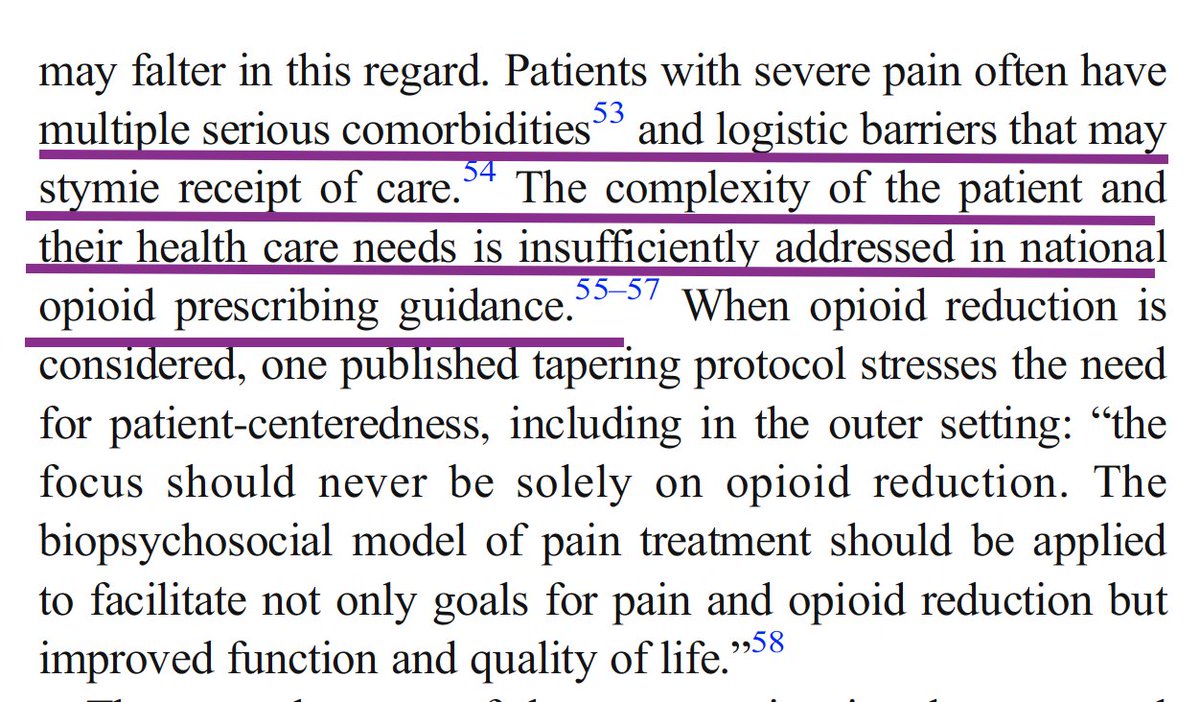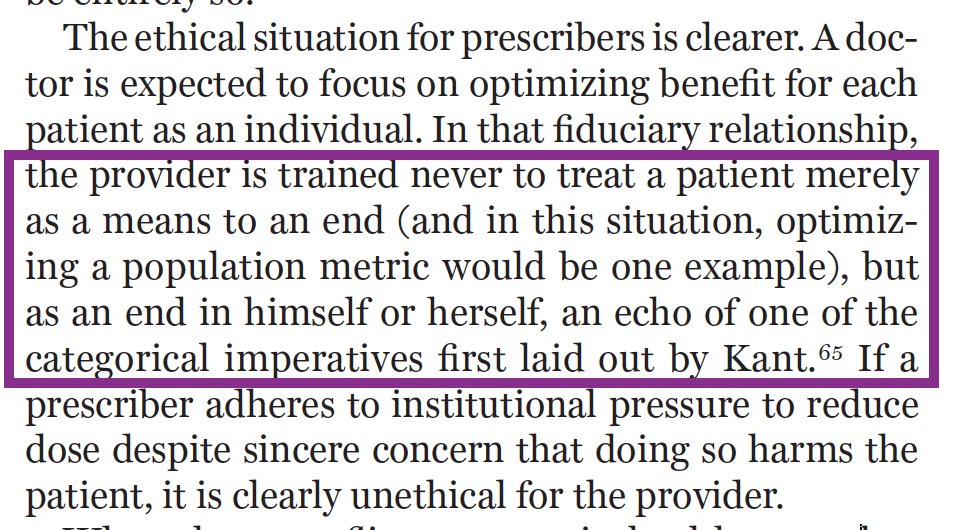
1/This week in @journaljgim: “Promoting Patient-Centeredness in #opioid Deprescribing: a Blueprint for De-implementation Science”
Tools of “deimplementation science” should guide evaluation of health care changes - w/@BethDarnall @AllysonVarley
link.springer.com/article/10.100…
Tools of “deimplementation science” should guide evaluation of health care changes - w/@BethDarnall @AllysonVarley
link.springer.com/article/10.100…

2/Opioid prescribing has ⬇️37% since its peak in 2011. Today, many agencies agree that “deprescribing” was not carried out in ways that consistently protected patients.
We ask “how can well-intended changes to care transpire in ways that are unsafe or harmful?”
We ask “how can well-intended changes to care transpire in ways that are unsafe or harmful?”

3/De-implementation= “reducing or stopping practices that are ineffective, unproven, harmful, overused, or inappropriate”
With opioids, that could be not starting, stopping or reducing.For us, this does *not* reflect a commitment to opioid elimination from care.h/t @VPrasadMDMPH
With opioids, that could be not starting, stopping or reducing.For us, this does *not* reflect a commitment to opioid elimination from care.h/t @VPrasadMDMPH

4/Implementation scientists ask: “how and why efforts to change health care delivery succeed or fail.
It's *not enough* to ask whether prescriptions have declined
*It's better to ask "how reductions were made to happen and what the impact was on patients with pain” #ChronicPain
It's *not enough* to ask whether prescriptions have declined
*It's better to ask "how reductions were made to happen and what the impact was on patients with pain” #ChronicPain
5/Headlines, press releases, news coverage on Rx opioids treat "pill count dynamics" as the be-all & end-all
To us, a change to care is worth it only if carried out in such a way as to achieve protection of patients. That principle is honored mostly in the breach, sadly
To us, a change to care is worth it only if carried out in such a way as to achieve protection of patients. That principle is honored mostly in the breach, sadly

6/But we have tools to do better. Scientists who study healthcare system change assess those efforts by looking at 5 domains from a model called “Consolidated Framework for Implementation Research”.
Let's walk this through with opioid Rx's #CFIR cfirguide.org
Let's walk this through with opioid Rx's #CFIR cfirguide.org

7/Domain 1: Characteristics of Individuals – this includes professionals’ training in pain care, comfort with patients, and their ability to withstand external professional pressures and more cfirguide.org/constructs/cha…
Our studies ignore this at their peril
Our studies ignore this at their peril
8/Domain 2 of #CFIR is the Intervention: “What letters, orders, policies, resources, supports, or other actions were used to change pain care & opioid prescribing?"–reporters & scholars leaders should ALWAYS report if their interventions were across the board or *individualized* 

9/Domain 3 is "Inner Setting":organizational culture.
Do leaders use threats or rewards to⬇️opioid Rx's?
Does the culture of an organization permit safe expression of concern about harm to patients?
In a @TEDx talk, a leader rebuffed suicide concerns
Do leaders use threats or rewards to⬇️opioid Rx's?
Does the culture of an organization permit safe expression of concern about harm to patients?
In a @TEDx talk, a leader rebuffed suicide concerns
10/Domain 4 of #CFIR is Process: what health care changes were carried out? what resources allocated?Who was consulted? & how the process was changed? Much of today’s research & journalistic reporting tell only about “pill dynamics”, i.e. “too much!” “too little!”
11/Domain 5 of #CFIR is Outer Setting. In part this domain asks to what extent is a planned change to care delivery is aligned with the needs and context of the patients we wish to serve, including disability & logistics! 

12/ The Outer Setting also includes *external policies*, including quality metrics from @NCQA, thresholds for payment decisions tied to 90 MME. Most ignore CDC Guideline’s distinction between doses forced down vs not escalated, and ignore the clarifications from CDC and HHS. 

13/A warning: external policies are NEVER completely rational, for 2 reasons
1]decision-makers cannot fully absorb problems they are called upon to solve (“bounded rationality”).
2]policy is not put into effect by one party, but many, including regulators, even journalists
1]decision-makers cannot fully absorb problems they are called upon to solve (“bounded rationality”).
2]policy is not put into effect by one party, but many, including regulators, even journalists

14/We offer a better slate of measures of success (for successful de-implementation). It’s not sufficient to just ask how many fewer opioid prescriptions are written. We offer "better metrics" for health systems & insurers and @NCQA 

15/"Implementation science points toward a
reappraisal of how our health system responses to the opioid crisis can become more effective, holistic, and patient centered."
We're proud to be part of @vahsrd @StanfordPain @UMass @UABNews
Read more here: link.springer.com/article/10.100…
reappraisal of how our health system responses to the opioid crisis can become more effective, holistic, and patient centered."
We're proud to be part of @vahsrd @StanfordPain @UMass @UABNews
Read more here: link.springer.com/article/10.100…
• • •
Missing some Tweet in this thread? You can try to
force a refresh







